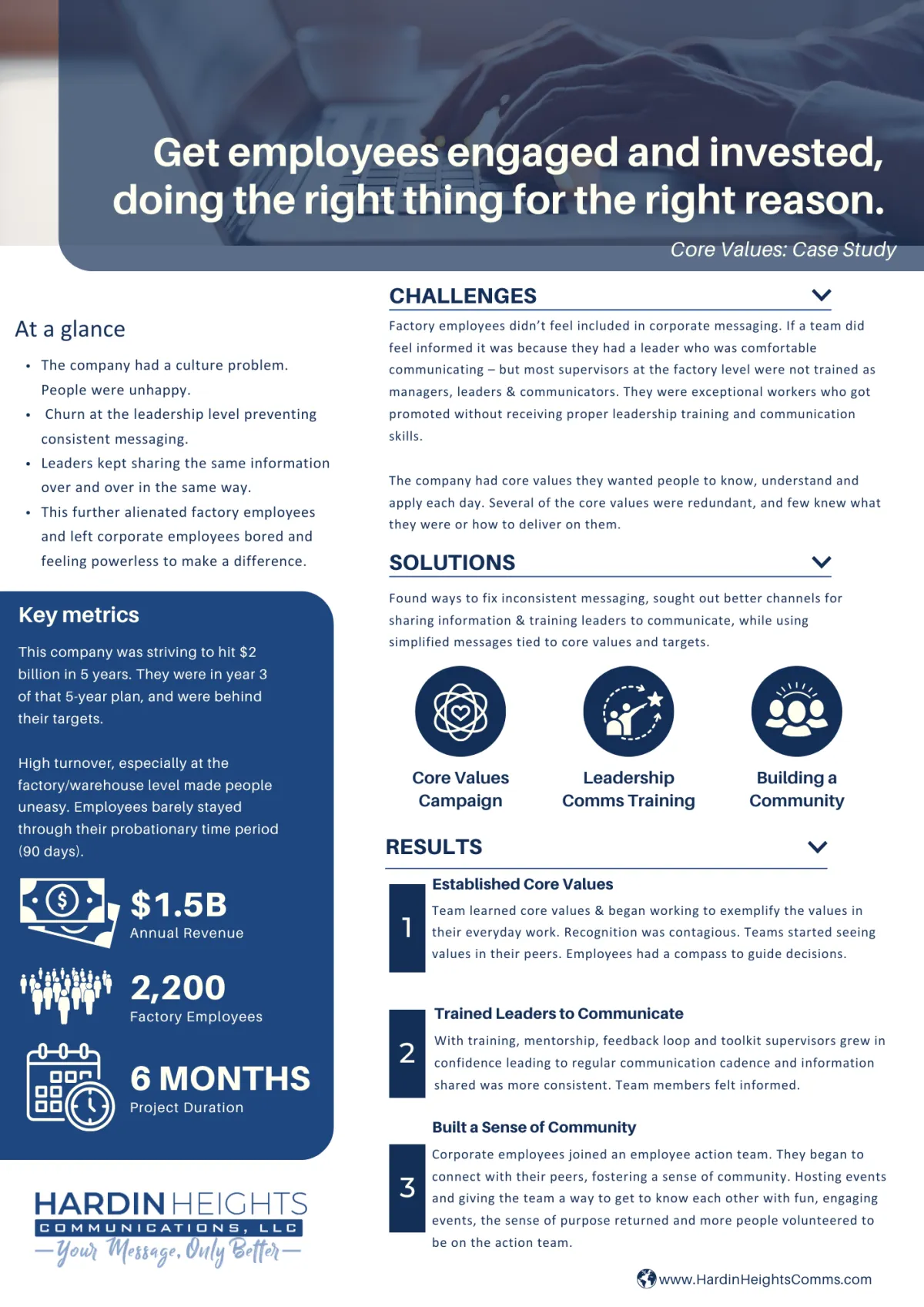
Sharing Your Success With Case Studies
The best way to show people what you can do for them, is to show people what you've successfully delivered for others! The industry doesn't [usually] matter. Naming names doesn't matter. Your success is what matters - and you can do that by sharing your success with case studies!
Case studies can shine a spotlight on what you have done - highlighting results you have ALREADY ACHIEVED. This means, you've delivered value to clients, companies, small businesses. Sharing these successes can feel icky - especially as women - because it's not considered lady-like to brag about our accomplishments. Get over it!!! If you are in business there is no better way to let future clients know what you have already done.
It takes time to get the data you'll need, but I'm going to share a framework that will allow you to capture these successes at the end of every client interaction, and a way to present your case studies by anonymizing details so you can share your impact on a project, even without sharing company info!
3 Steps to Capturing and Creating Detailed, Compelling Case Studies
1. Define the Challenge and Set the Context
Clearly describe the client’s background, the situation they faced, and the specific communication challenge or transition (such as M&A, reorg, or leadership change). you can do this with or without company names. Ideally, you can quote leaders and name the names - but you should ask before doing so!
If you aren't able to name names - use generalizations: Manufacturing company with 4500 employees, planning to acquire a competitor with 1800 full time workers.
Highlight the pain points, objectives, and what was at stake for the client to establish relevance for future prospects.
Use both quantitative (metrics, KPIs) and qualitative (quotes, anecdotes) details to show the problem’s impact.
2. Document Your Approach and Actions
Outline the strategies, tools, and creative solutions you implemented to address the client’s needs. Focus on what made YOU successful!
Capture key milestones, decision points, and any innovative methods used-be specific about what you did and why.
Track your process in real time during the project to ensure you collect accurate data, feedback, and examples as you go. If it’s too late to track in real time – go back and re-create what you did to collect the data, feedback and examples.
Build a process to collect this info on your next project in real time.
3. Showcase Results and Client Impact
Present clear, measurable outcomes (increased engagement, improved morale, smoother transitions, etc.) supported by data and client testimonials.
Include before-and-after comparisons, client feedback, and any lessons learned or unexpected wins.
Summarize the value delivered and how your communications expertise made a difference-helping future clients see themselves in the story.
Use visuals and data call outs to make the big wins pop off the page!
Following these steps will help you consistently create detailed, persuasive case studies that highlight your impact and attract new clients.
